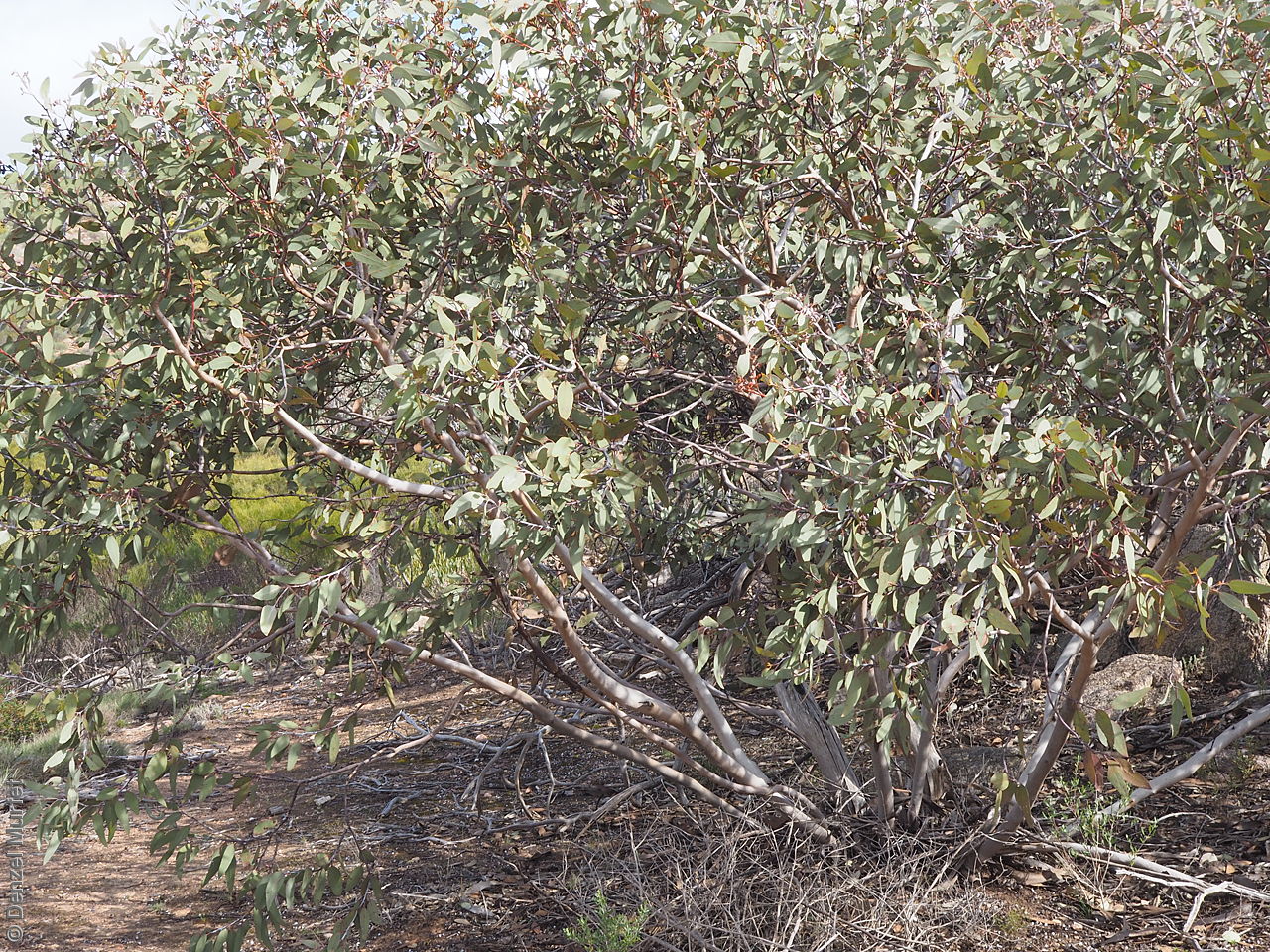
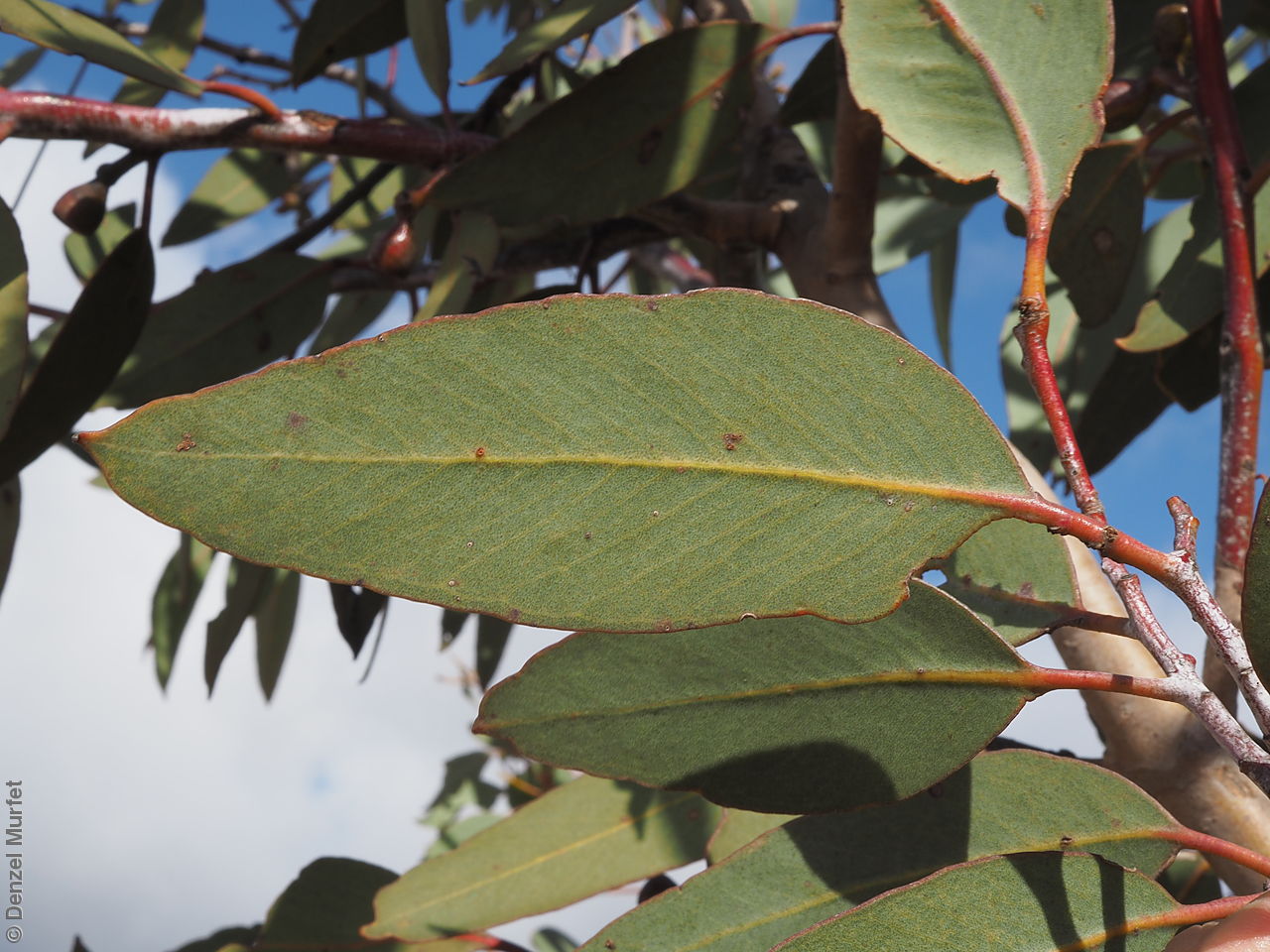
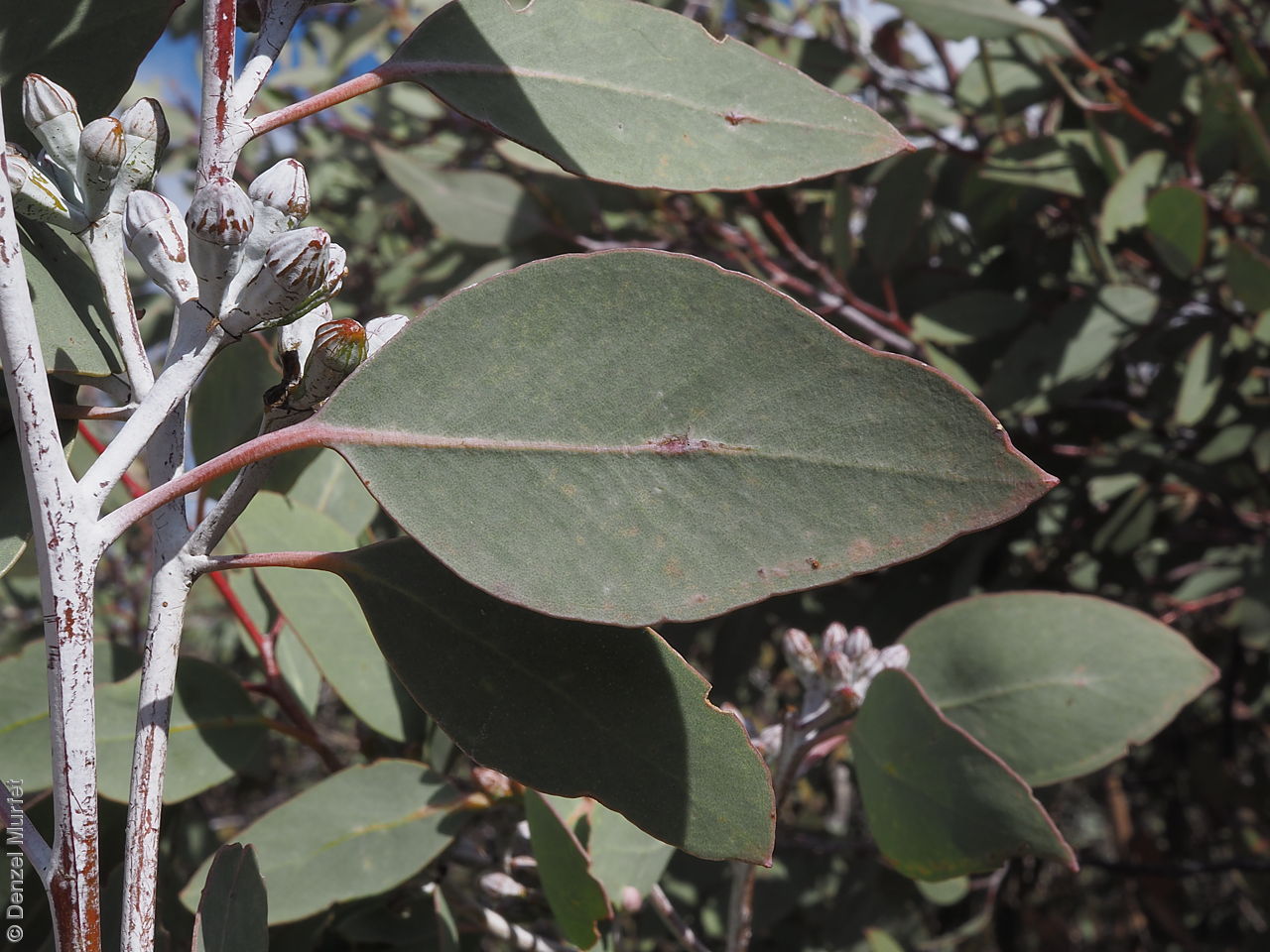
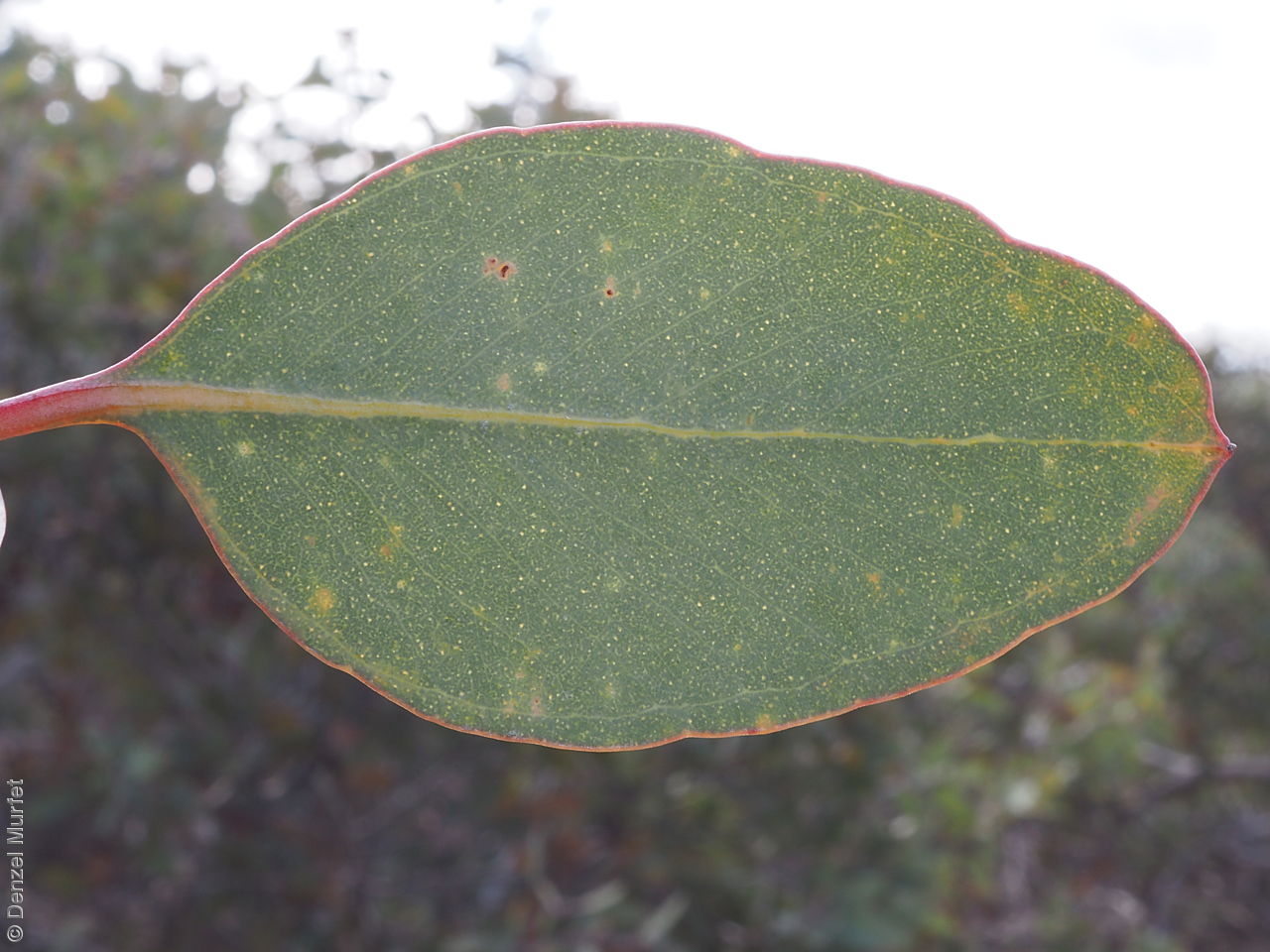
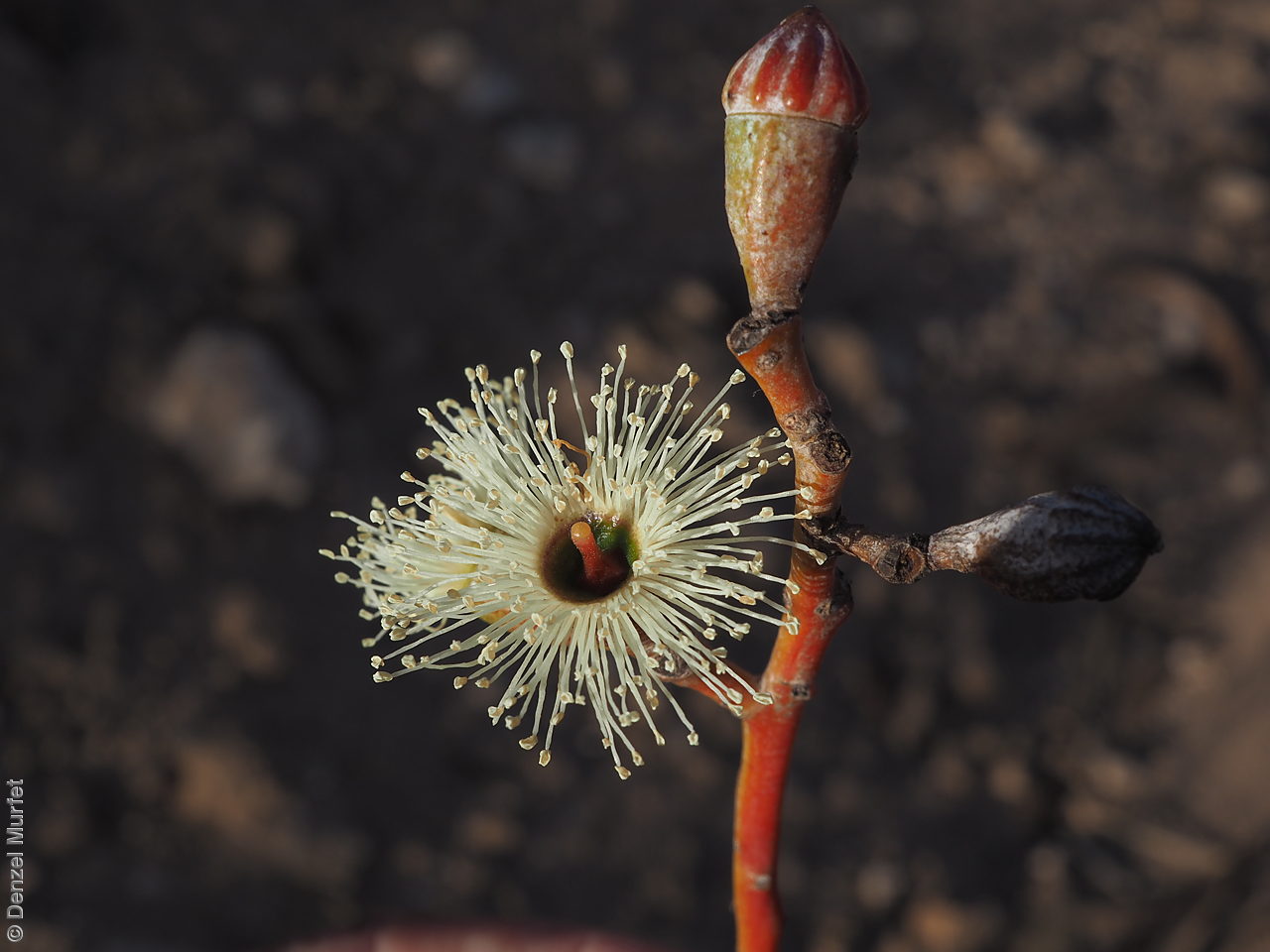
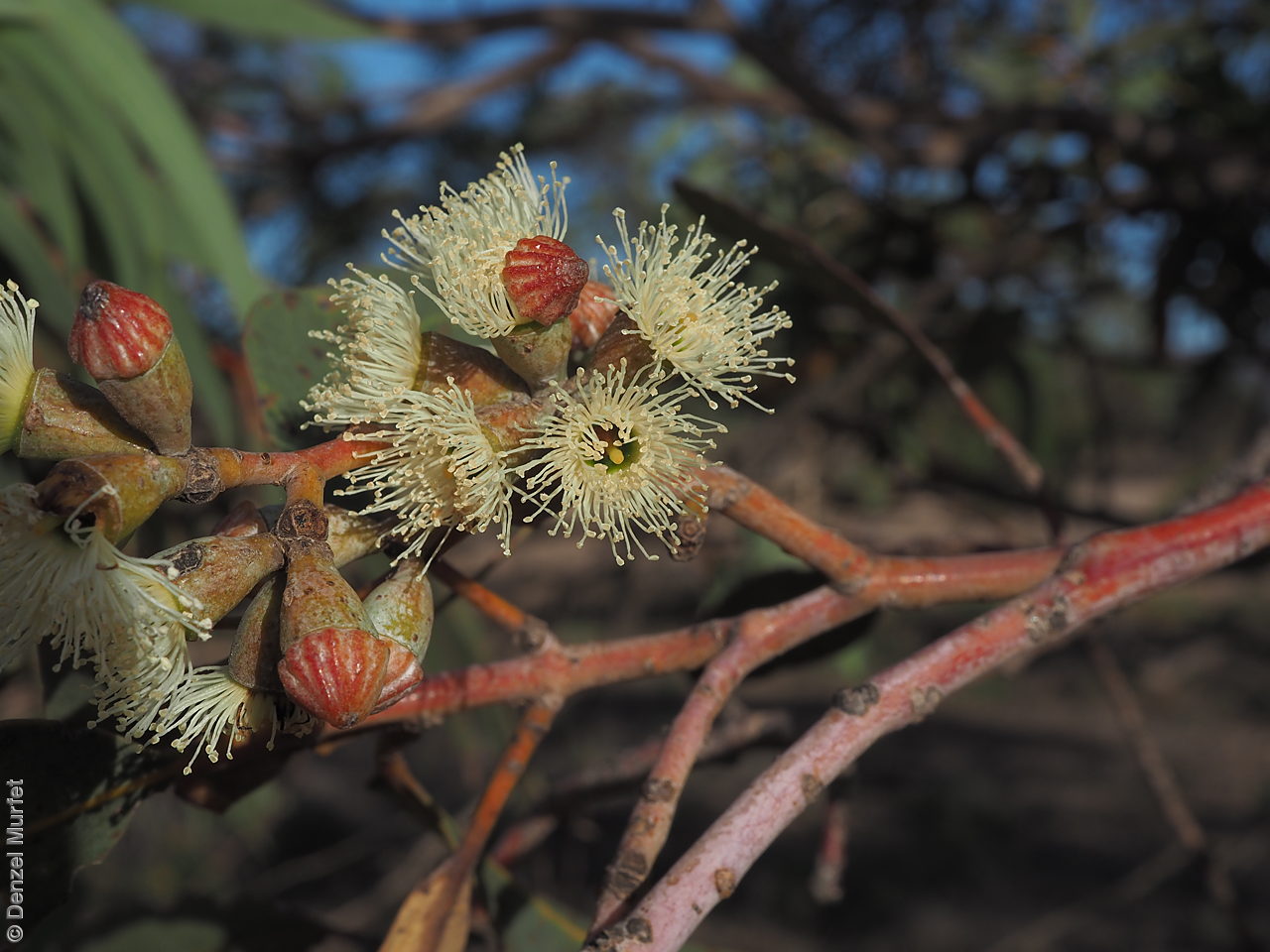
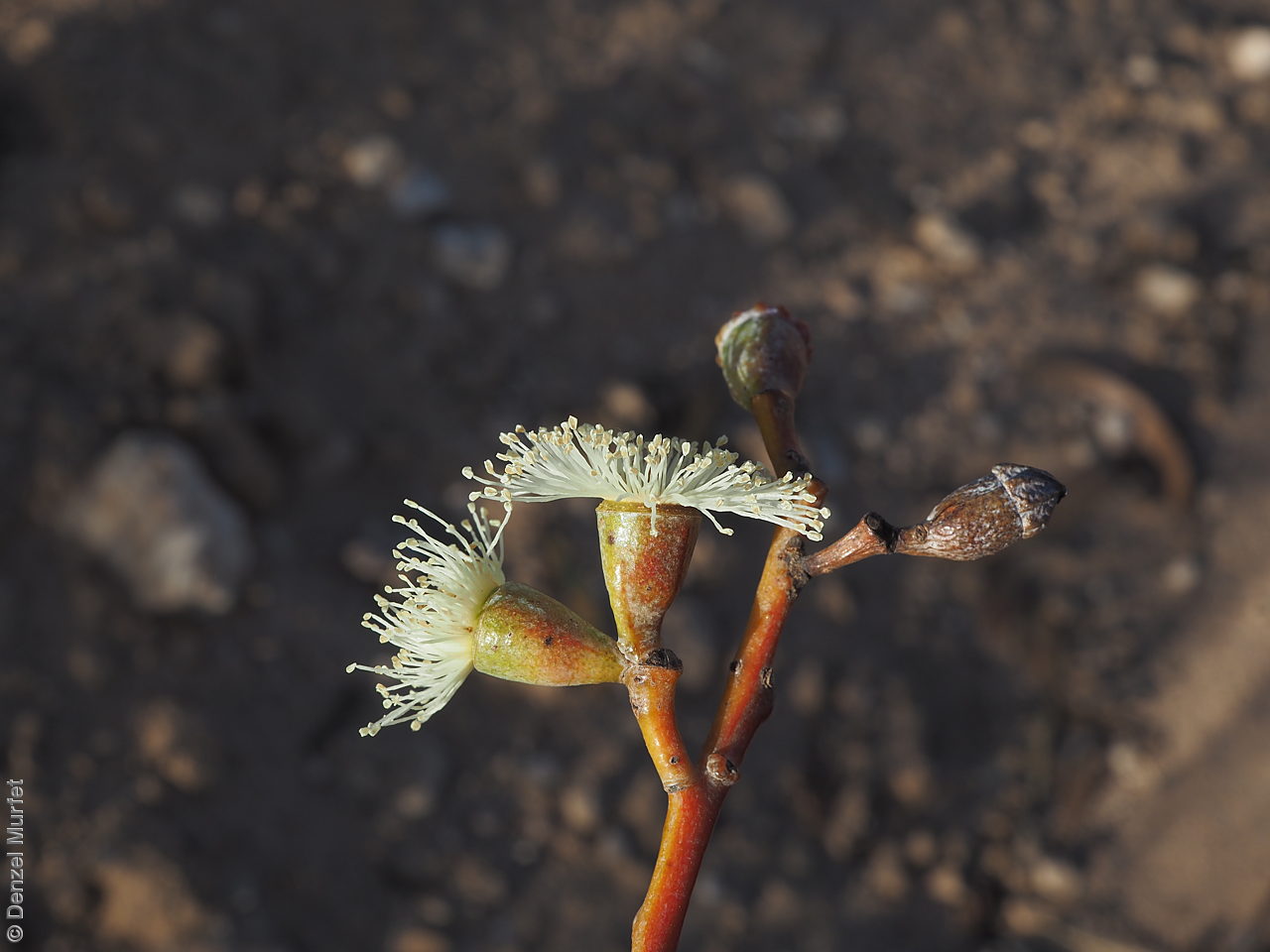
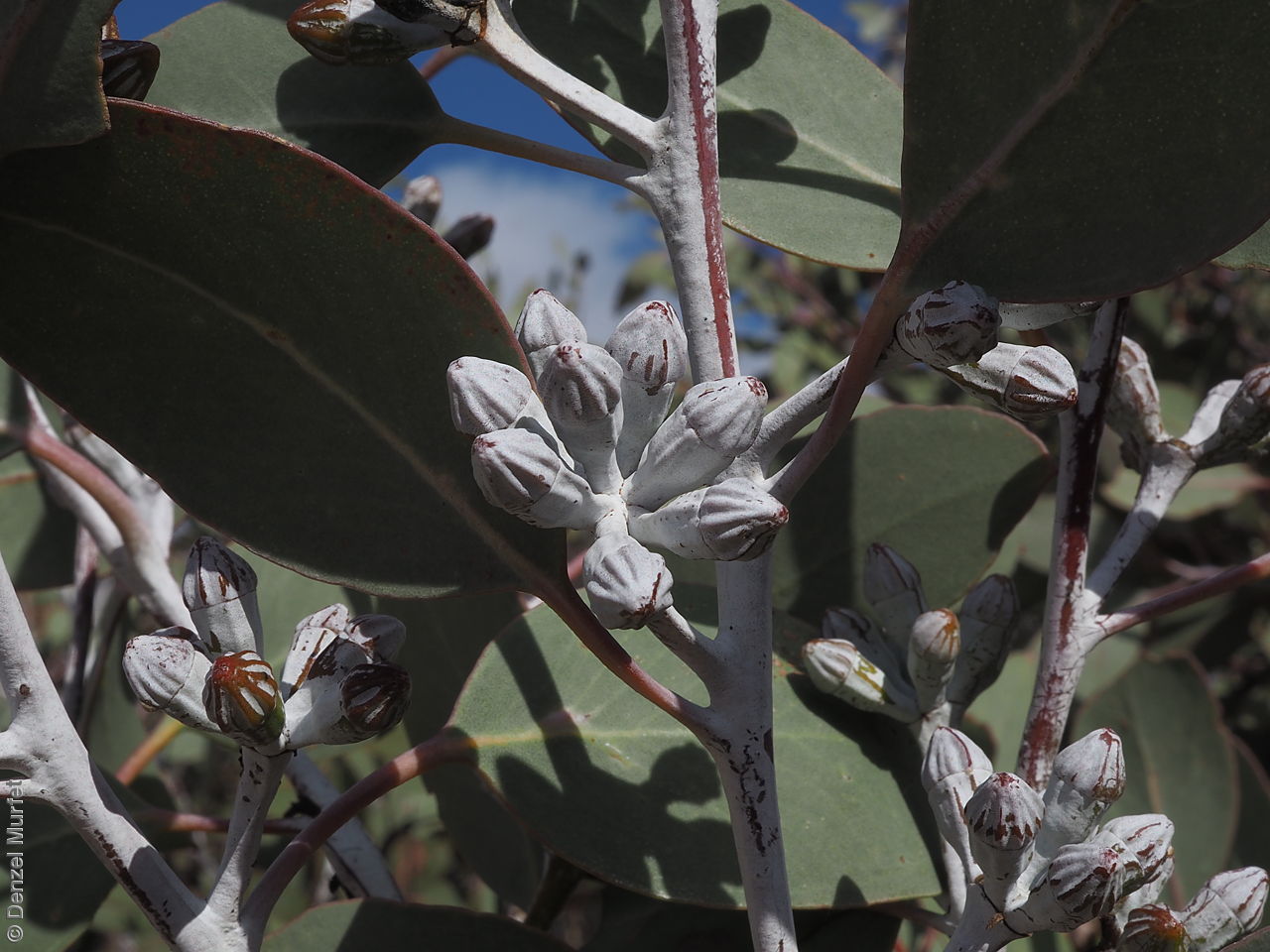
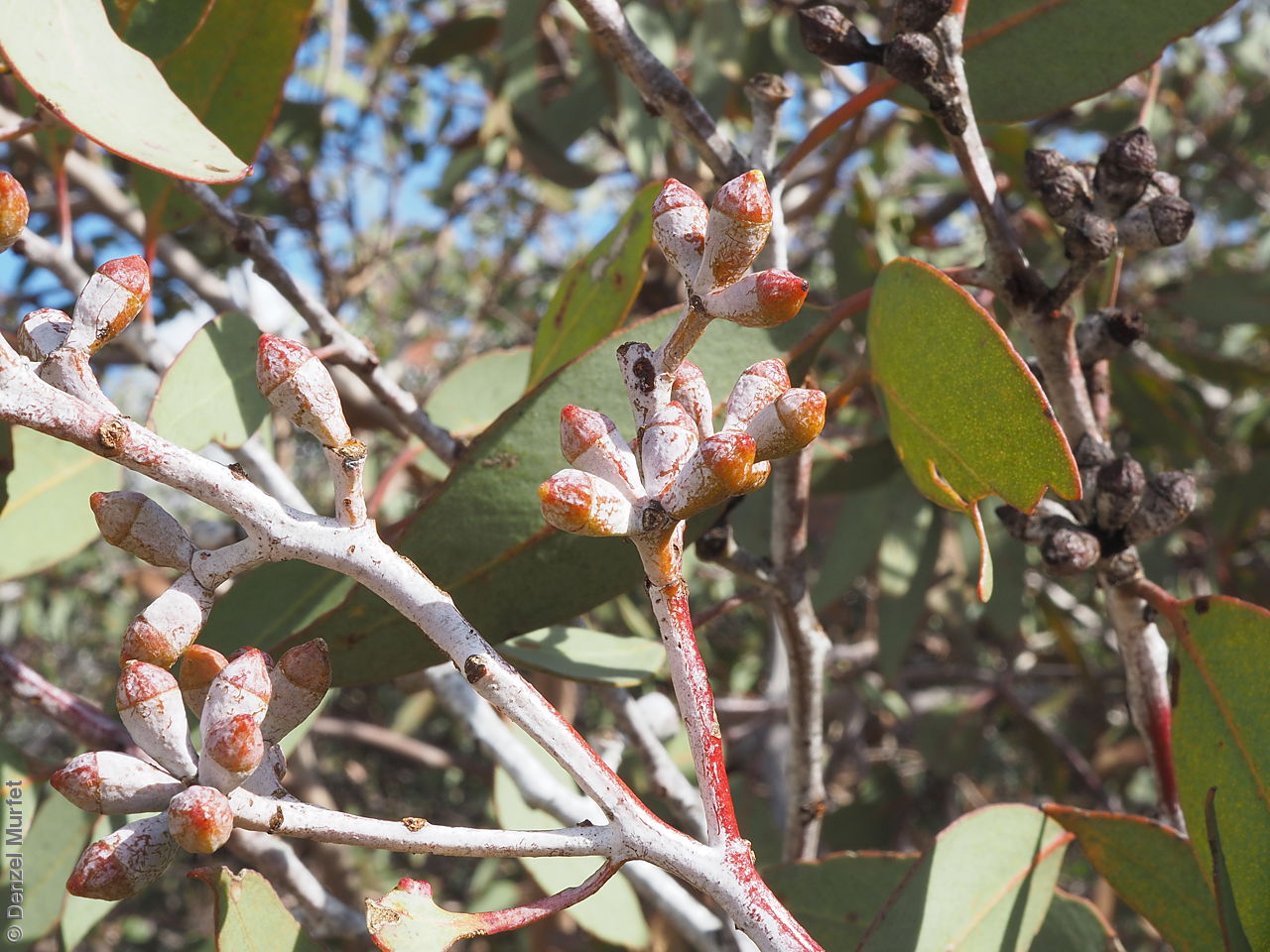
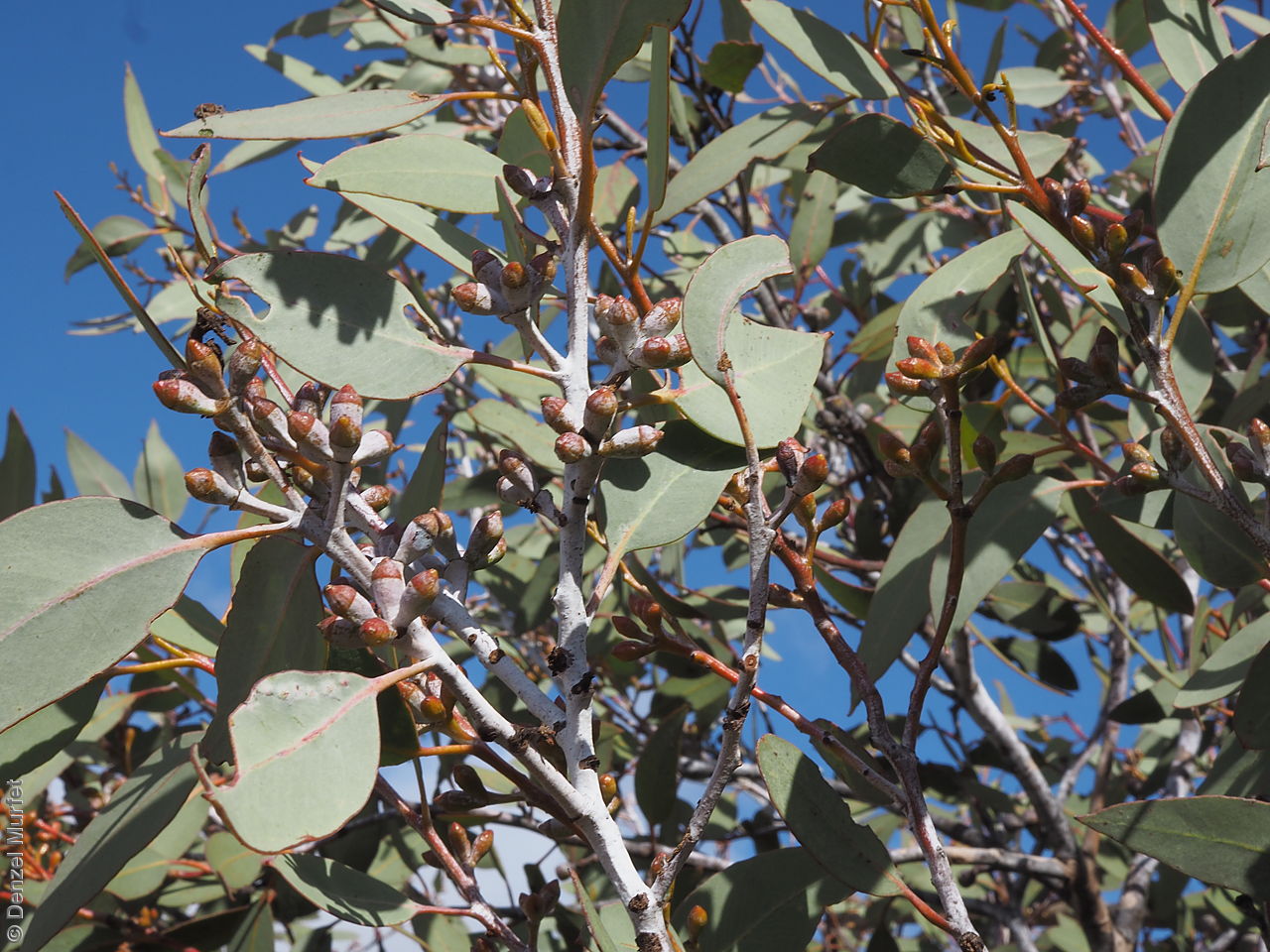
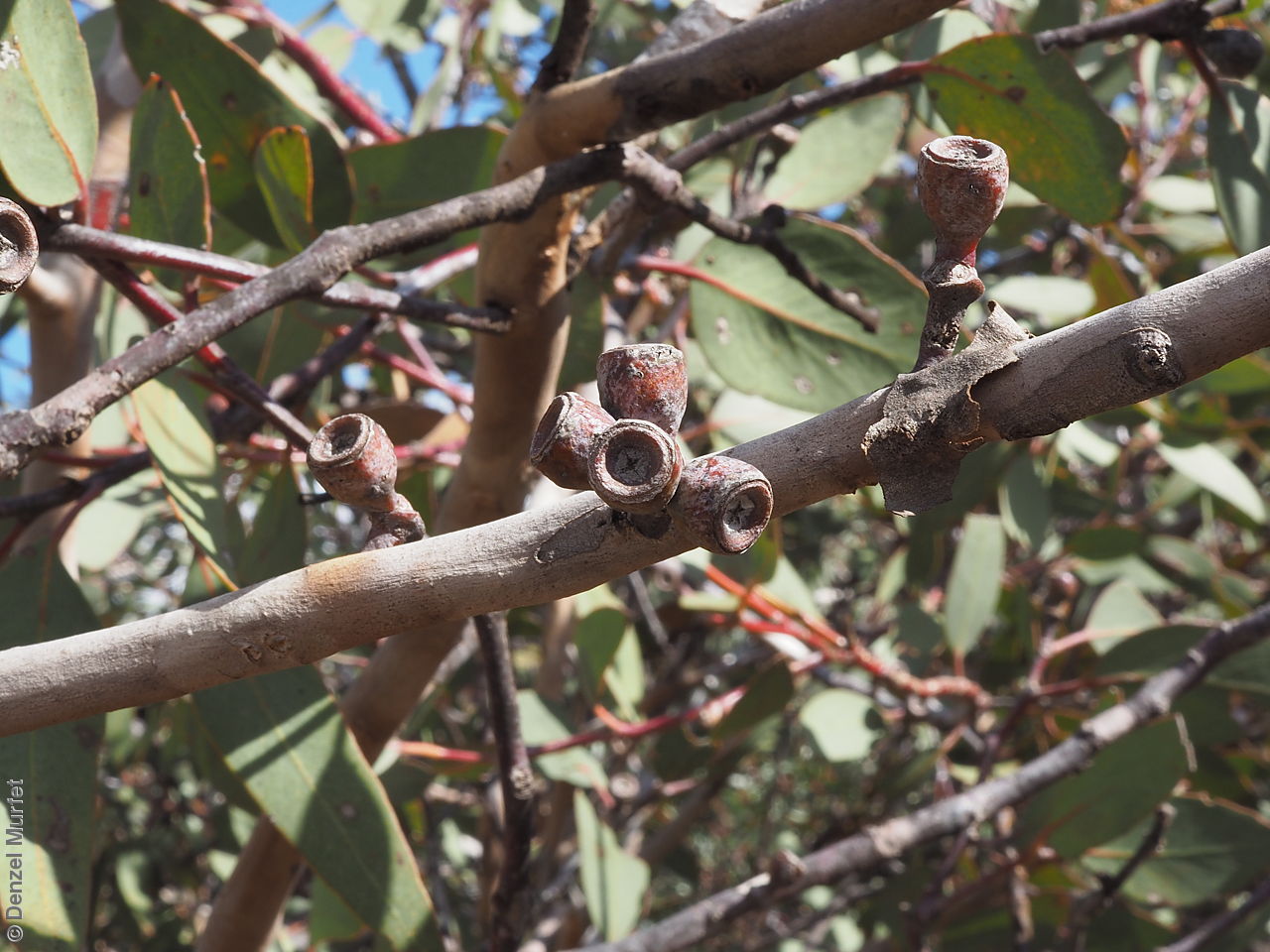
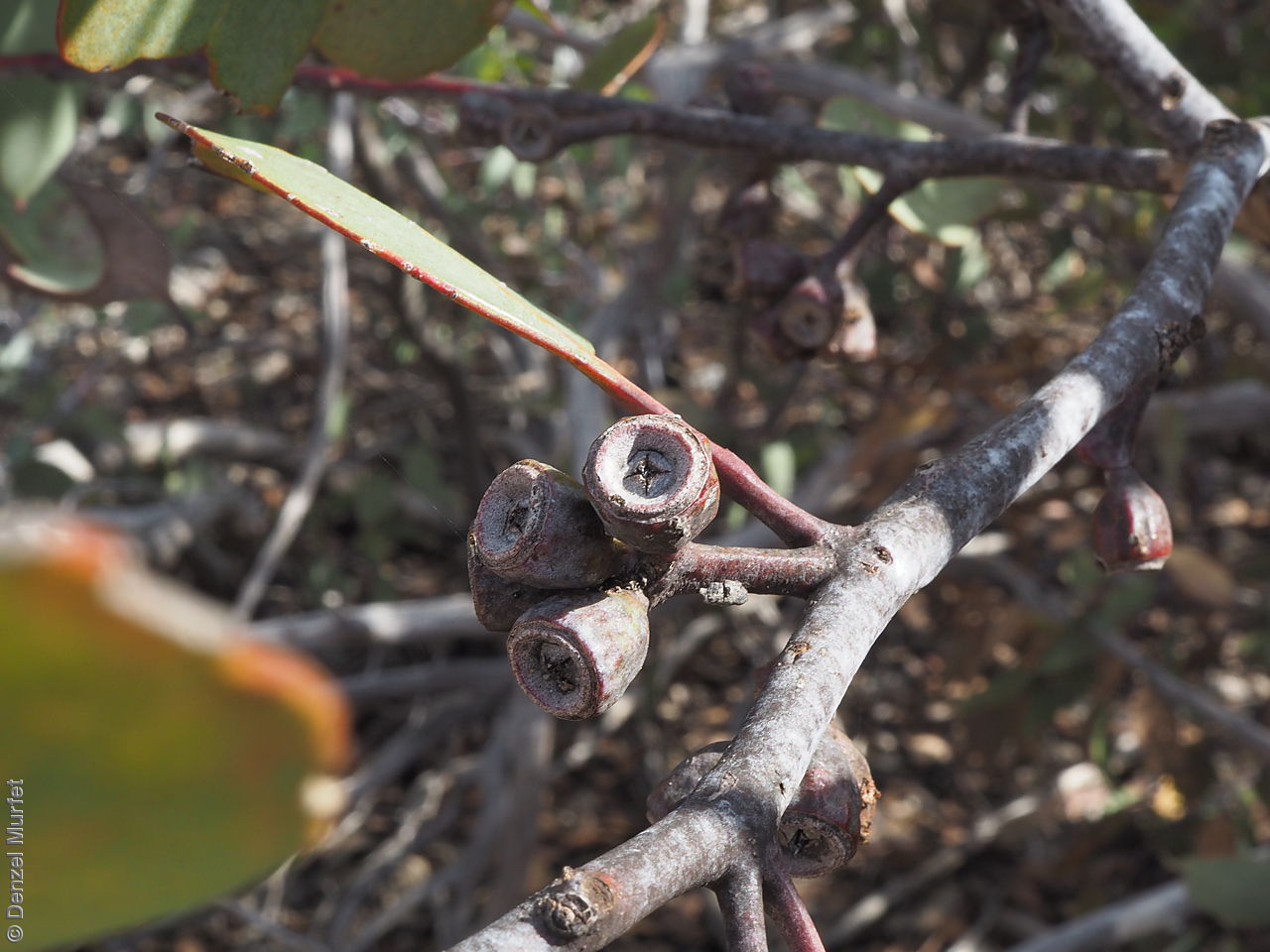
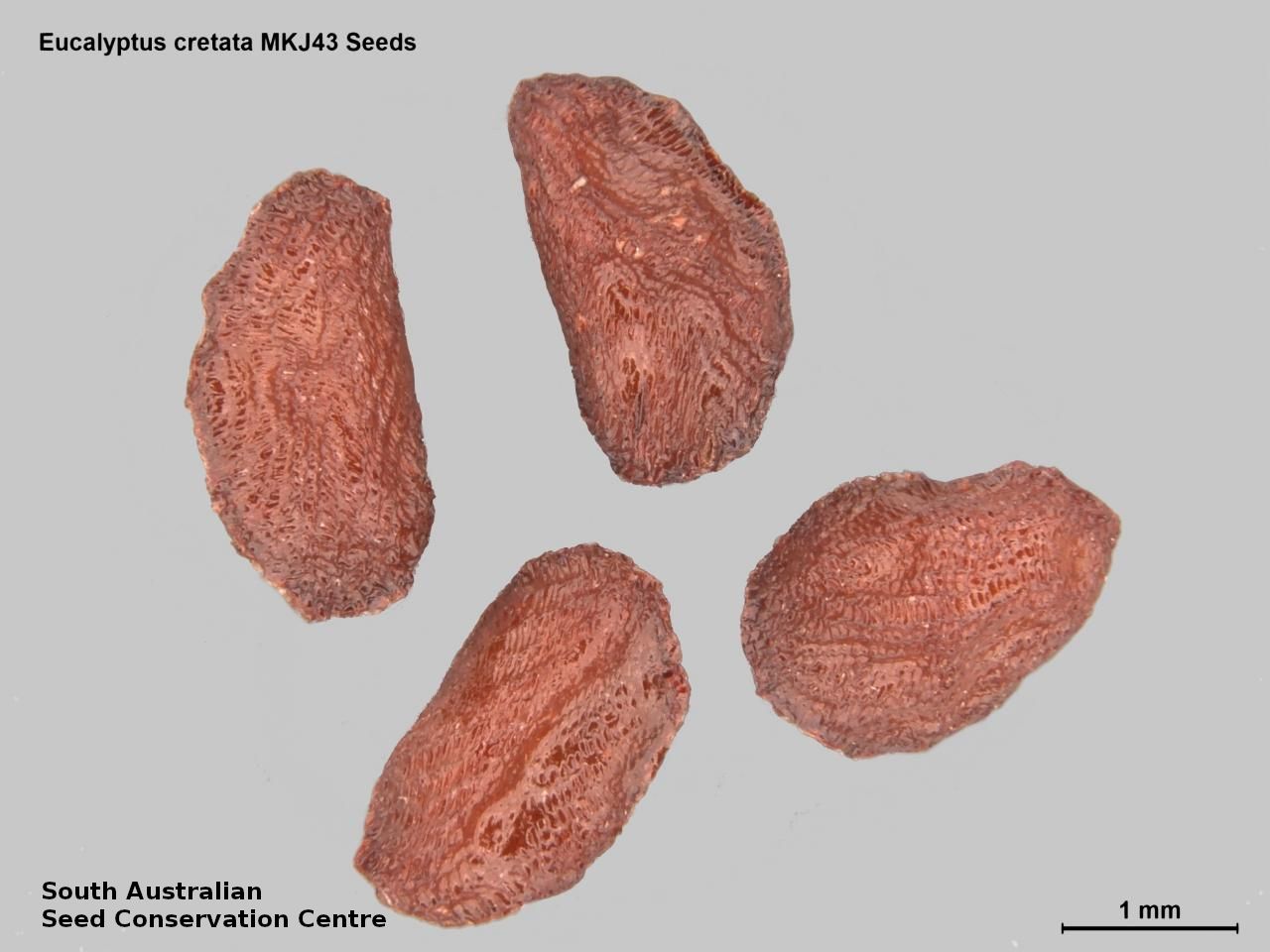

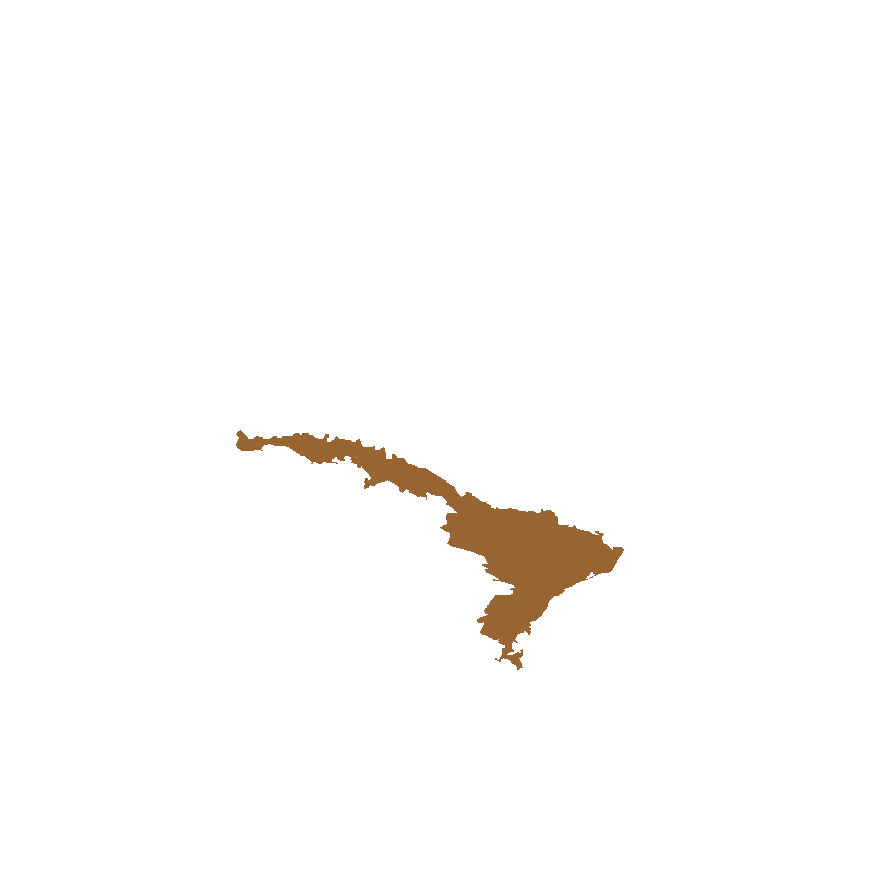
Botanical art
Prior names
Eucalyptus sp. V
Common names
Chalky Mallee
Darke Peak Mallee
Etymology
Eucalyptus from the Greek 'eu' meaning well and 'calyptos' meaning covered; alluding to the cap or lid which covers the stamens in the bud. Cretata from the Latin 'cretatus' meaning marked with chalk; referring to the white-waxy branchlets, buds and fruits.
Distribution and status
Endemic to South Australia and found on central Eyre peninsula, growing in mallee vegetation on plains and low hills in loamy to clayey soils. Native. Rare in South Australia.
Herbarium region: Eyre Peninsula
NRM region: Eyre Peninsula
AVH map: SA distribution map (external link)
Plant description
Multi-stemmed mallee to 9 m tall with smooth, grey to coppery to cream bark throughout. Juvenile leaves orbicular to ovate, strongly pruinsoe, dull, grey-green. Adult leaves to 140 mm long and 33 mm wide, lanceolate to broad-lanceolate, dull, blue-green. Flowers axillary in umbels of 7-9 flowers, held erect. Buds to 14 mm long and 8 mm wide, strongly pruinose, bud-cap round to cone-shaped, equal in width or wider than the bud-base. Flowers creamy-white, appearing spasmodically. Fruits are cup-shaped to short cylinder-shaped fruit to 11 mm long and 11 mm wide, smooth to ribbed, usually pruinose when young. Seeds are red-brown ovoid seed to 2.5 mm long and 1.3 mm wide, with a slight reticulated surface. Seed embryo type is folded.
Seed collection and propagation
Collect seeds between January and December. Collect mature fruits that are dark and hard (difficult to break with a finger nail), with the valves un-open any time of year. Leave the fruits in a breathable container in a dry room for one to two weeks. This allows the valves on the fruit to open and release the seeds. Separate the seeds by placing all the materials into a bucket and shaking it to dislodge the seeds. Pass the material through a sieve to separate the unwanted material. The finer material will contain both seeds (soft) and frass (hard) usually distinguishable from each other but can be very similar in shape and colour. With finer sieves, the seeds can be separated from the frass but this is not essential for storage or propagation. Store the seeds with a desiccant such as dried silica beads or dry rice, in an air tight container in a cool and dry place. From one collection, the seed viability was high, at 100%. Seeds are non-dormant, viable seed should germinate readily.
| Location | No. of seeds (weight grams) | Number of plants | Date collected | Collection number Collection location | Date stored | % Viability | Storage temperature |
|---|---|---|---|---|---|---|---|
| BGA MSB | 9,300 (17.8 g) 9,300 (17.8 g) | 50 | 9-Nov-2004 | MKJ43 Eyre Peninsula | 31-Mar-2006 | 100% | -18°C |
Number of plants: This is the number of plants from which the seeds were collected.
Collection location: The Herbarium of South Australia's region name.
% Viability: Percentage of filled healthy seeds determined by a cut test or x-ray.